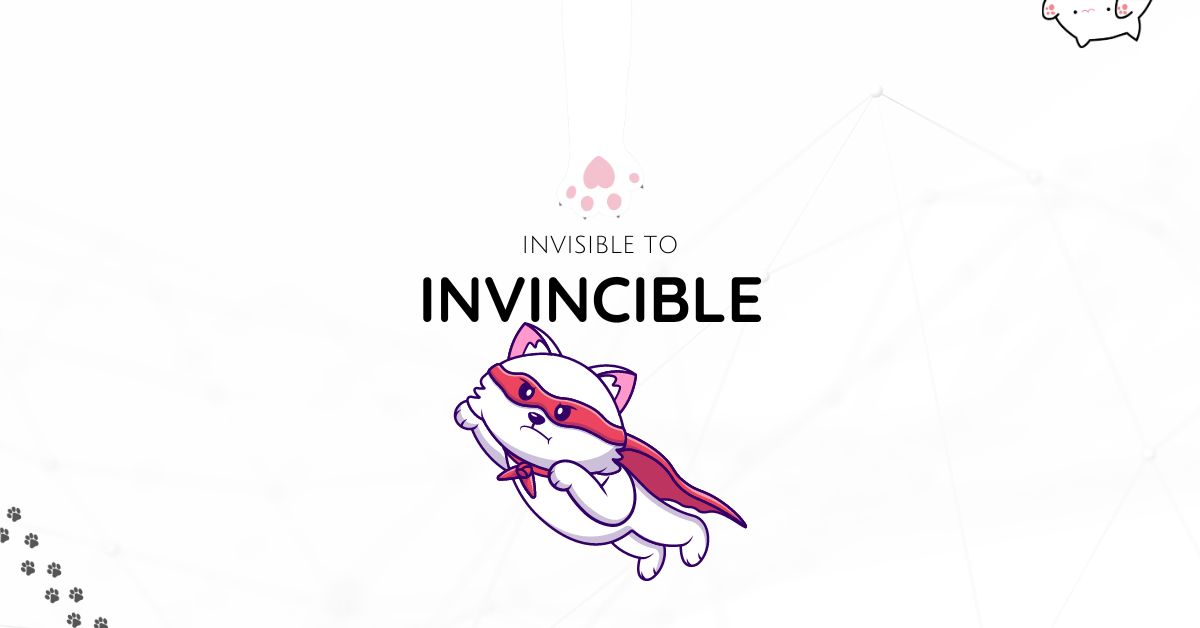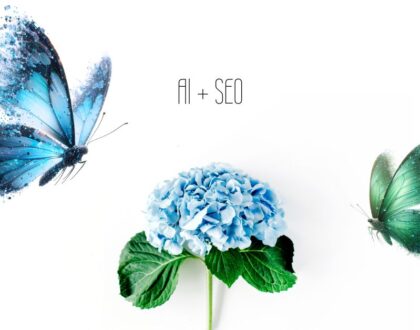Invisible to Invincible: Complete Digital Marketing Guide

Unless you’ve been living under a rock, you’d agree that every business needs a stringent online presence to thrive in today’s competitive marketplace. Traditional marketing just won’t cut it anymore; everyone is going for digital marketing, and so should you.
Your future leads, customers, and clients are all online, browsing, researching, and making purchasing decisions. Without effective digital marketing plans, you won’t be able to reach them.
To help you ease your digital marketing journey and reach business goals we’ve created this guide. This will help you find, connect, and engage with your audience, and ultimately drive them towards your products and services.

This Guide is For:
- Are you starting a new business? If so, this will help you grasp the essentials of effective digital marketing.
- If you’re currently handling digital marketing yourself, you’ll gain the knowledge and tools for implementing it more effectively.
- And if you’re already outsourcing your digital marketing to an agency, this will give you a deeper understanding of their strategies, allowing you to go beyond just reviewing monthly reports.
Digital Marketing in a Nutshell
Digital marketing encompasses a wide range of online tactics and channels, including search engine optimization (SEO), content marketing, social media marketing, email marketing, pay-per-click (PPC) advertising, and more. By leveraging these digital channels, you can expand your online reach, attract new customers, and increase sales.

Understanding Your Target Audience
Before starting your digital marketing campaign, it’s essential to truly understand who you’re talking to. This means conducting thorough market research and devising detailed buyer personas. These personas are more than just demographics—they’re a comprehensive look at the needs, preferences, and pain points of your ideal customers.
By aligning your marketing messages and strategies with what really matters to your audience, you can amplify the impact of your campaigns. It’s not just about reaching people; it’s about connecting with them on a personal level and building trust. Get this right, and your digital marketing efforts will not only reach your audience but resonate with them in a way that drives real results.
Creating a Digital Marketing Strategy
A clearly defined digital marketing strategy acts as a roadmap for achieving your business objectives. Start your digital marketing strategy by setting specific, measurable, achievable, relevant, and time-bound (SMART) goals that align with your overall business objectives.
Next, carefully select the digital marketing channels that are most relevant to your target audience and industry — not every business needs to do all types of digital marketing. Whether it’s building a strong social media presence, improving your website’s search engine visibility, or launching email marketing campaigns, each channel should be chosen strategically to maximize results.
Website Optimization
Your business’s website is often the first point of contact between your brand and customers, both current and potential. It should effectively convey everything about your business, products, and services.
Pay careful attention to the website’s tone and theme, ensuring that they match your business’s identity. Consistency in language and appearance across all landing pages is crucial.
The website’s UI/UX greatly impacts its conversion rate. Each element of the webpage, from headings to calls to action, should be carefully chosen. Prioritize user-friendliness, visual appeal, and search engine optimization to ensure the website’s success.
SEO Optimization
To maximize your website’s visibility on search engine results pages (SERPs) and attract organic traffic, consider implementing a comprehensive SEO strategy. This can involve optimizing meta tags, improving website loading speed, creating and publishing high-quality, relevant content, and ensuring that your website meets the latest SEO standards and best practices.
Here’s our 2024 Search Engine Optimization Checklist
Content Marketing
Content has always been important in digital marketing, and it still is today. Investing in valuable, relevant, and engaging content, helps you attract and retain the attention of your target audience.
By creating captivating blog posts, eye-catching videos, insightful infographics, case studies, and compelling podcasts, you can demonstrate your expertise, build trust, and establish credibility with your audience. Your content marketing strategy should have the right balance of information, education, and conversion.
Additionally, disseminating your content across various online channels, such as popular social media platforms, targeted email newsletters, and industry-specific forums, can significantly amplify your reach and drive valuable traffic to your website.
Social Media Marketing
Social media platforms are a powerful way to connect with your audience on a personal level. From Facebook and Instagram to X (Previously Twitter) and LinkedIn, each social media platform has its own distinct strengths and user demographics. By understanding your target audience’s preferences and behaviors, you can attune your social media marketing efforts to resonate with them effectively.
Regularly posting, sharing valuable content, and engaging with your audience by commenting on industry-related posts, as well as responding to comments and messages, can help you build strong relationships and increase brand awareness.
Video Marketing
Videos are an engaging, easily digestible content format that captures attention quickly. The rise of vertical scrolling and social media platforms like YouTube and TikTok has revolutionized video consumption in the newer digital-centric generation.
Due to the range of content creation, video has made it an integral part of modern marketing strategies.
Video marketing is a powerful tool for small businesses to enhance their online presence, engage with customers, and drive business growth. Here are some practical ways a small business can utilize video marketing effectively:
- Product Launches and Demos: Showcase your products in action to highlight features and benefits. Product videos help understand the product and troubleshoot problems better. These videos can establish your brand as an authority in your industry.
- Customer Testimonials: Record satisfied customers sharing their positive experiences with your products or services. Reviews build trust and credibility.
- Live Streaming Sessions: Host live sessions on platforms like Facebook, Instagram, Twitch, TikTok, or YouTube to interact with your audience in real-time and answer their questions. You can also live stream the launch of new products or services. This creates excitement and allows you to demonstrate your offerings directly to your audience.
- Behind-the-Scenes: Share behind-the-scenes content to give your audience a glimpse into your business operations, culture, and team.
- Webinars: Host webinars to educate your audience on industry-related topics. This positions your business as a knowledgeable resource and helps build trust.
Make sure to consistently create and post content on Facebook, Instagram, YouTube, and TikTok. Take advantage of features such as Stories and Reels to increase visibility. Engage in relevant trends and challenges. Who knows, the next viral video on TikTok could be yours.
Email Marketing
Email is one of the oldest ways of online marketing. Despite the rise of newer digital marketing channels, email marketing remains one of the most effective ways to communicate with your audience directly.
While building an email list may seem time-consuming, it can provide you with the most valuable data for the fruitiest results. The email list of subscribers who have opted in to receive communications from your business allows you to deliver targeted messages, promotions, and updates directly to their inbox. Crafting compelling email campaigns that address your subscribers’ needs and offer value can help you nurture relationships, boost website traffic, and increase sales and conversions.
Email is an essential tool for all businesses, but it becomes particularly crucial for B2B marketing. It is a cost-effective and efficient way to nurture leads, build relationships, and drive conversions. With the right strategy and compelling content, email marketing can significantly impact the success of B2B marketing campaigns.
Paid Advertising
Running paid ads can help you tap into a new audience, boost brand recognition, generate more leads and sales, target specific customer groups, and immediately reach a large number of people, while also allowing you to retarget site visitors. Different platforms offer various ways to measure ad performance using metrics such as cost-per-click, conversion rate, and return on investment.
Online paid advertising can be done in two ways: PPC and media buying. While PPC and media buying differ in their approaches, channels, and payment models, they share common goals of audience targeting, driving traffic, and achieving conversions.
Pay-Per-Click (PPC) Advertising
PPC is an online advertising model where advertisers pay a fee each time one of their ads is clicked. Costs are typically based on bidding systems where the price depends on keyword competitiveness and ad placement. It’s primarily used in search engine advertising (e.g., Google Ads, Bing Ads) but also extends to social media platforms(e.g., Facebook, Instagram, LinkedIn) and online display networks.
PPC advertisements can be targeted with great precision using keywords, demographics, interests, and behaviors. Performance can be measured using metrics such as clicks, click-through rate (CTR), conversion rate, and return on ad spend (ROAS). This highly targeted form of advertising can be an effective way to drive immediate traffic to your website and generate leads and sales.
Media Buying
Media buying is the process of purchasing advertising space across different channels such as websites, TV, radio, online banners, and more. Advertisers pay for ad space using various pricing models, including CPM (cost per thousand impressions), flat fees, or negotiated rates, regardless of the number of clicks or interactions.
It’s a comprehensive strategy that includes various forms of media, both traditional and digital. While it can have an immediate impact, it’s primarily used for long-term brand building.
The targeting options are less specific and more broad, often based on the audience reach and demographics of the media outlet. Performance can be measured using metrics such as impressions, reach, frequency, and overall brand awareness.
Search Engine Marketing (SEM)
SEM combines SEO and PPC strategies to maximize your visibility on search engine results pages. While SEO involves refining your website to improve its organic search engine rankings for specific keywords, PPC allows you to bid for ad placement on the same search engine results pages.
By incorporating both SEO and PPC strategies, you can significantly increase your visibility on search engine results pages, enabling you to reach a broader audience and drive more relevant traffic to your website. This holistic approach empowers you to engage potential customers at various stages of their purchasing journey, from initial exploration to decisive buying decisions.
Analytics and Measurement
Analyzing key performance indicators (KPIs) is a crucial step in assessing the effectiveness of your digital marketing strategies. By closely monitoring metrics such as website traffic, conversion rates, email open rates, click-through rates, cost per acquisition, return on ad spend, and social media engagement, you can gain valuable insights into the performance of your campaigns. Regularly reviewing this data allows you to identify trends, patterns, and areas for improvement, empowering you to make informed decisions and optimize your marketing efforts for long-term success.
Budgeting and Resource Allocation
Effective digital marketing requires careful budgeting and resource allocation. Evaluate your financial resources carefully and set clear objectives for your digital marketing efforts. Determine how much you can afford to spend on digital marketing activities while still ensuring that you can achieve your desired outcomes.
When distributing your budget across different channels, consider the potential return on investment of each channel and align it with your target audience’s preferences. Continuously monitor your spending and be ready to make adjustments to your budget allocation in order to maximize returns and minimize unnecessary expenses. Make the most of your digital marketing efforts by regularly evaluating and optimizing your budget allocation.
Building Brand Awareness
Developing a strong brand is crucial in order to differentiate yourself from your competitors in a crowded marketplace. Consistency in branding is the key, so it’s important to ensure that your brand identity remains uniform across all digital marketing platforms. Utilize all online channels like SEO, social media, email marketing, content marketing, and paid advertising, to effectively boost brand visibility and recognition within your target market.
Continuously providing value and upholding a positive brand image will help you establish trust and loyalty among both existing and potential customers.
Nurturing Customer Relationship
Nurturing customer relationships through digital channels requires a strategic approach that leverages various online tools and platforms. Building strong relationships with your customers can lead to increased loyalty, repeat business, and positive word-of-mouth referrals. Some effective ways to do this:
- Personalized Email Communication: Use personalized emails addressing customers by name and tailoring content to their preferences. Segment your email list based on purchase history, interests, and engagement levels for relevant offers and updates. Implement automated email sequences for onboarding, follow-ups, and re-engagement using marketing automation tools.
- Social Media Engagement: Stay engaged with customers on social media by responding promptly to comments and messages. Show appreciation for positive feedback and address any concerns constructively. Share valuable content like blog posts, infographics, and videos to connect with your audience and encourage them to share their experiences.
- Customer Service and Support: Utilize live chat and chatbots for instant customer support on your website and social media. Additionally, create comprehensive help centers and FAQ sections for quick reference.
- Loyalty Programs and Rewards: Develop loyalty programs that reward repeat business with exclusive discounts, early access to new products, and special promotions. Implement a points-based system where customers earn points for purchases, referrals, and social media engagement, which can be redeemed for discounts or freebies.
- Content Marketing: Produce high-quality content that educates and informs your audience. Use storytelling to create an emotional connection with your customers and humanize your brand.
- Customer Feedback and Surveys: Conduct regular customer satisfaction surveys, gather feedback on product quality and service experiences, and use the feedback to make improvements. Encourage customers to leave reviews on platforms like Google, Yelp, and Trustpilot, and respond to both positive and negative reviews to demonstrate commitment to customer satisfaction.
- Community Building: Consider creating online communities where customers can interact and share their experiences. Host virtual events and live Q&A sessions to engage with your audience.
- Consistent Branding and Messaging: Maintain a consistent brand voice across all digital channels to build a recognizable and trustworthy brand. Keep your audience informed with regular updates about new products, company news, and industry trends through your website, social media, and email newsletters.
- Data Analytics and Personalization: Utilize customer data to understand their preferences, behaviors, and purchase history. This information can help in creating highly personalized marketing campaigns and using predictive analytics to anticipate customer needs.
- Seamless Omnichannel Experience: Make sure customers can transition smoothly between your website, social media profiles, mobile app, and email communications for a consistent and seamless experience.
Mobile Marketing
Given the widespread use of smartphones and other mobile devices, mobile marketing has become essential for businesses looking to connect with consumers while they are on the move. It’s crucial to ensure that your website is fully responsive and that your digital marketing efforts are tailored to the specific needs of mobile users. This includes optimizing for various screen sizes and load times, and ensuring smooth navigation and functionality on mobile phones.
Even from an SEO perspective, mobile is crucial due to Google’s mobile-first indexing. This means that Google primarily uses the mobile version of a site’s content for indexing and ranking.
You may also want to explore the potential of mobile apps, SMS marketing, and location-based advertising to engage with your target audience in real-time and drive traffic to your physical locations. By embracing these mobile marketing strategies, you can effectively connect with consumers wherever they are and enhance your overall marketing efforts.
Staying Updated and Evolving With Digital Marketing
As we conclude this guide on digital marketing for small businesses, it’s crucial to remember that the digital marketing landscape is constantly evolving. To maintain a competitive edge, it is crucial to not only stay informed but also to regularly test new strategies and tactics while consistently optimizing your campaigns for improved performance. By being flexible and open to change, you can guarantee that your digital marketing endeavors continue to yield effective results in the face of constant digital marketing evolution.
Staying updated with the latest industry trends, technological advancements, and shifts in consumer behavior is essential.
If you want more free resources to stay updated and grow in the digital space, sign up for our new letters. We have been sending some awesome content there.
Recommended Posts

SEO vs SEM: Does SEM Help With SEO?
April 15, 2024

How to Symphonise AI and SEO
January 31, 2024

2024 Search Engine Optimization Checklist
January 1, 2024

